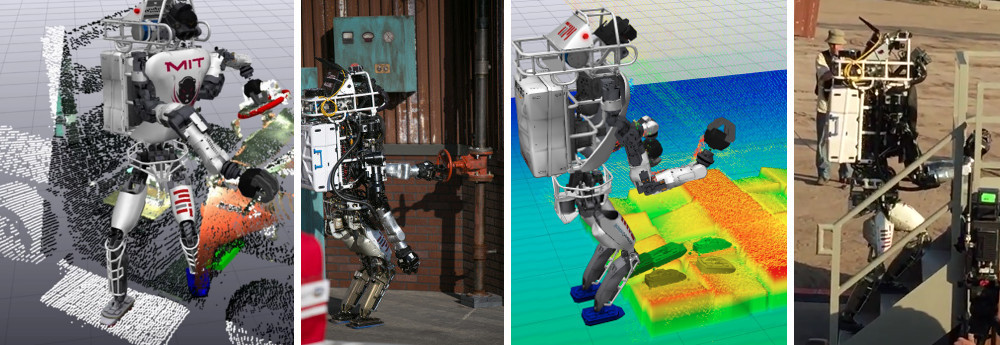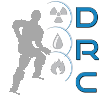The MIT DARPA Robotics Challenge Team
MIT competed in the 2012-2015 DARPA Robotics Challenge to develop control and perception algorithms as well as user interfaces to command a (humanoid) robot aided by a human operator to carry out a series of manipulation and mobility tasks. As a ‘software track’ team we competed with the Atlas robot built by Boston Dynamics.
The DARPA Robotics Challenge (DRC) was motivated by disasters such as the Fukushima Daiichi hydrogen explosion and the Deepwater Horizon underwater oil spill. The key goal was to develop a dexterous mobile robot that could move through and within disaster zones and to perform useful tasks, with minimal guidance from remote human operators while the operators remained safely out of harm’s way. As part of the DARPA Robotics Challenge Finals event in June 2015, Team MIT competed against some of the best humanoid robots in the world for $3.5M in prizes, where we finished in 6th place overall and in 2nd place of amoungst teams using Atlas.
Competition Timeline
- April 2012: DARPA Robotics Challenge competition announced. Our prosposal was accepted in June.
- June 2013: We finished in 3rd place, from 26 teams, in the Simulated Virtual Robotics Challenge (VRC) and won funding and the use the Atlas robot.
- December 2013: Our team traveled to Homestead, Florida for the DRC Trials. In sunny but windy conditions we finished in 4th place out of 16 and qualified for the finals.
- January 2015: Boston Dynamics dramatically upgraded the robot: moving all computing on board and adding a 1 hour battery.
- June 2015: We finished in 6th place in the competition - just outside the prizes but were trilled with our scientific contributions to the competition.
DRC Finals Summary
Run 1: Due to a human programming error, the robot fell when transitioning from the driving task to the egress task (the foot throttle controller wasn’t turned off). This caused the robot to the fall and faceplant out of the car onto the asphalt. Our right arm was broken as were a few of our key sensors (an arm encoder). We called a reset – taking a 10 min penalty – got the robot back up and ready to go. However our right arm was hanging completely limp. That was unfortunate because we were planning on doing all of the tasks right-handed.
With poise and cleverness from our operators, and an impressive showing from the algorithms, we were able to adapt and perform almost all of the tasks left handed. The only point we had to skip was the drill (we need both hands to turn the drill on). Even the walking on terrain and stairs looked fantastic despite having the 10kg right arm flopping passively. After the officials review of the video, we were awarded the egress point to be in 4th place (the best of the non-wheeled robots) at the end of the first day. 7 of 8 points in 50 mins.
Run 2: After 8 hours of repairs from Boston Dynamics including a replaced PDB, pump motor, an a replaced right arm, and partly fried CPU and harddisks we made it onto the course - an hour past our scheduled time. It started fantastically well. We actually passed the other top teams that were running on the parallel courses but had started up to 30 min earlier. We drove, egressed, walked through the door, turned the valve, picked up the drill, turned it on.
And then… we pushed a little too hard into the wall. The wrist temperature was rising – if we tripped the temperature fault then the wrist would have shut off completely (not good when you’re holding a drill in a wall). We had to back off before the cut. Then we started cutting but the bit slipped out of the wall during the cut. The operators saw it and tried to go back to fix, but the drill has a 5 min automatic safety shutoff. Once off, it’s extremely hard to turn back on. Our very real opportunity to win the entire competition slipped away from us in an instant. We knew we had to get all of the points (and quickly) to win, so we tried the only thing we could. We told the robot to punch the wall. The drywall didn’t fall. We chose to the drop the drill and move on, but came across a minor bug in our controller (literally a yaw wrap error) which caused the robot to fall. (Our recovery and bracing planner kicked in automatically and the robot fell gently to the ground.)
We had to pull Atlas off the course, stand it up and start again. With the win now out of reach, we finished strongly doing the rough terrain and stairs. 6 of 8 points in 56 mins.



